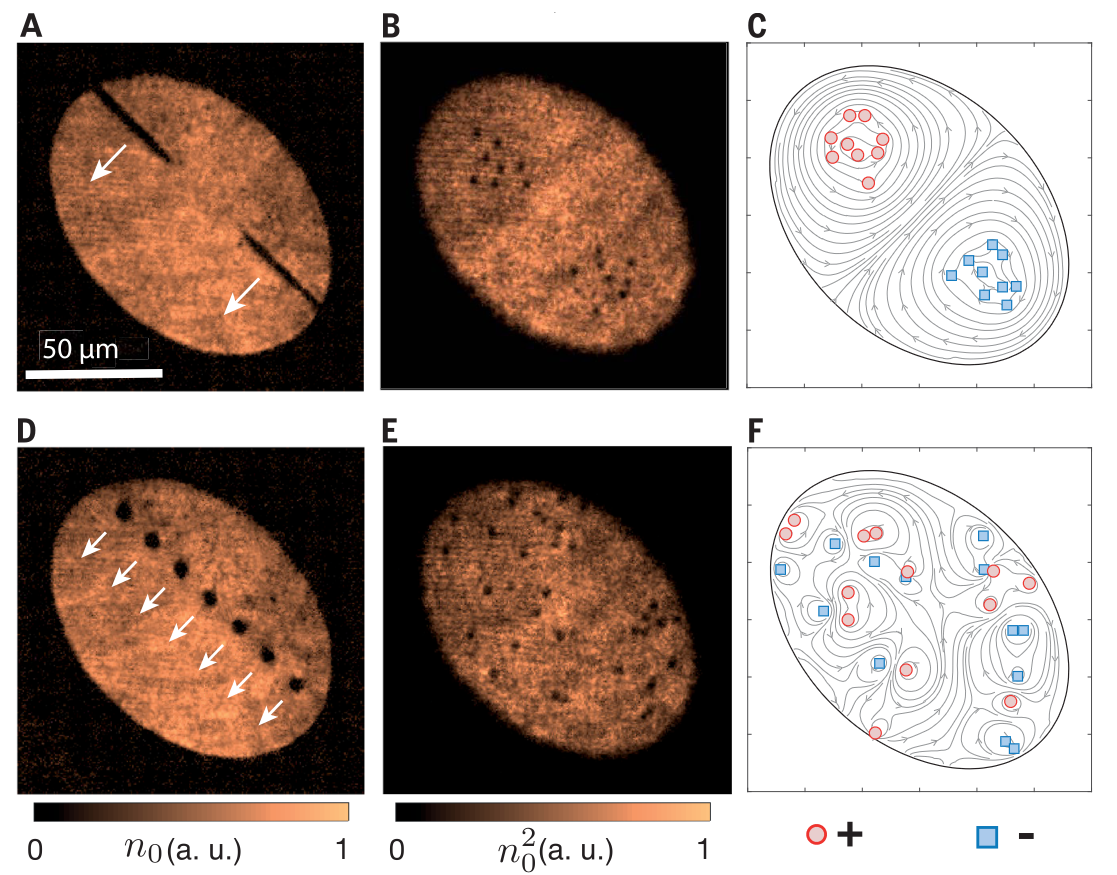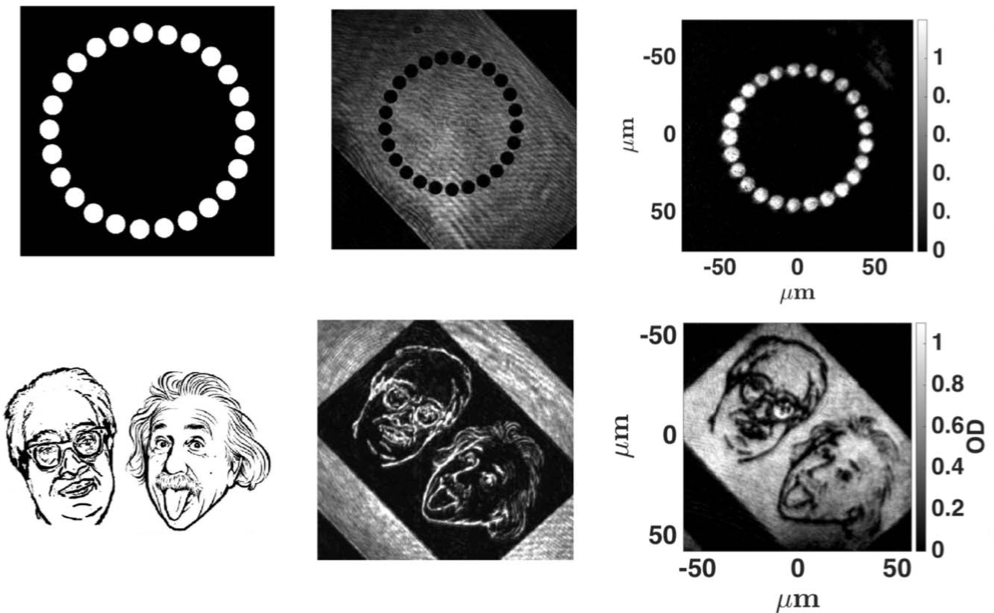A/Prof. Tyler Neely
UQ Amplify Associate Professor
CI Tyler Neely is an Associate Professor in Physics at UQ. He leads research projects on quantum turbulence in quasi-uniform 2D BEC superfluids, atomtronics and quantum sensing, and spinor condensates. He is an associate investigator in the ARC Centre of Excellence for Engineered Quantum Systems (EQUS) and an associate investigator of the ARC Centre of Excellence for Quantum Biotechnology (QUBIC).
His career has spanned three institutions, first the College of Optical Sciences at the University of Arizona, where he received his PhD in 2010 working with Bose-Einstein condensates (BECs) and quantum turbulence. Subsequently, he had a postdoctoral position at NIST (2010-2012), where he developed and advanced new techniques for midinfrared spectroscopy with pulsed lasers.
At the University of Queensland since June 2012, he initially joined the group of CI Prof Halina Rubinsztein-Dunlop as a Research Fellow in EQUS. Since 2020 he has been co-leading the UQ BEC group.

Physics Annexe Room 06-326
t.neely@uq.edu.au
+61 4 3199 9606
Pre-prints
The list below includes current pre-prints published on the arXiv.The two-dimensional One-Component Plasma (OCP) is a foundational model of the statistical mechanics of interacting particles, describing phenomena common to astrophysics, turbulence, and the Fractional Quantum Hall Effect (FQHE). Despite an extensive literature, the phase diagram of the 2D OCP is still a subject of some controversy. Here we develop a "vortex matter" simulator to realize the logarithmic-interaction OCP experimentally by exploiting the topological character of quantized vortices in a thin superfluid layer. Precision optical-tweezer control of the location of quantized vortices enables direct preparation of the OCP ground state with or without defects, and heating from acoustic excitations allows the observation of the melting transition from the solid Wigner crystal through the liquid phase. We present novel theoretical analysis that is in quantitative agreement with experimental observations, and demonstrates how equilibrium states are achieved through the system dynamics. This allows a precise measurement of the superfluid-thermal cloud mutual friction and heating coefficients. This platform provides a route towards solving a number of open problems in systems with long-range interactions. At equilibrium, it could distinguish between the competing scenarios of grain boundary melting and KTHNY theory. Dynamical simulators could test the existence of predicted edge-wave solitons which form a hydrodynamic analogue of topological edge states in the FQHE.
Publications
The list below includes all publications associated with the UQ BEC lab. For a full list of publications, please click here.We demonstrate a method for generating persistent currents in Bose-Einstein condensates by using a Gaussian process learner to experimentally control the stirring of the superfluid. The learner optimizes four different outcomes of the stirring process: (O.I) targeting and (O.II) maximization of the persistent current winding number and (O.III) targeting and (O.IV) maximization with time constraints. The learner optimizations are determined based on the achieved winding number and the number of spurious vortices introduced by stirring. We find that the learner is successful in optimizing the stirring protocols, although the optimal stirring profiles vary significantly depending strongly on the choice of cost function and scenario. These results suggest that stirring is robust and persistent currents can be reliably generated through a variety of stirring approaches.
Charles W. Woffinden, Andrew J. Groszek, Guillaume Gauthier, Bradley J. Mommers, Michael. W. J. Bromley, Simon A. Haine, Halina Rubinsztein-Dunlop, Matthew J. Davis, Tyler W. Neely, Mark Baker, SciPost Phys. 15, 128 (2023) - Published 2 October 2023
In this work, we cool down rubidium atoms to close to absolute zero to form a Bose Einstein Condensate. We form this condensate into a ring, then create sound waves travelling around the circumference of the ring. These sound waves (or phonons) create a standing wave in the density of the condensate, with high- and low-density points around the ring which act as markers. Due to the superfluid nature of the condensate, these markers stay in the same location of the ring and don’t rotate, even if the lab frame of reference is rotating (e.g. due to Earth’s rotation). This means that these markers act as an absolute frame of reference - like the north-seeking pole on a compass and so could potentially be used for navigation in situations where satellite navigation is not available e.g. under water.
Ashton S. Bradley, Jordan Clarke, Tyler W. Neely, and Brian P. Anderson, Phys. Rev. A 106, 053316 – Published 18 November 2022
The large-scale expansion dynamics of quantum gases is a central tool for ultracold gas experiments and poses a significant challenge for theory. In this work we provide an exact reformulation of the Gross-Pitaevskii equation for the ultracold Bose gas in a coordinate frame that adaptively scales with the system size during evolution, enabling simulations of long evolution times during expansion or similar large-scale manipulation.
M. Reeves et. al
Phys. Rev. X 12, 011031
In this work, we explored the relaxation of initially non-equilibrium configurations of vortices. Impressively, the vortex configurations in equilibrium were found to closely match the predictions of the point vortex model.
M Baker et al, 2021
AVS Quantum Sci. 3, 039201 (2021)
Roadmap on Atomtronics: State of the art and perspective, has now been published online in AVS Quantum Sci. 3, 039201 (2021). This is a review of the latest progress in atomtronics-enabled quantum technologies, such as matter-wave circuits and atom chips.
Gauthier Guillaume et al, 2020
Advances In Atomic, Molecular, and Optical Physics Volume 70, 2021, Pages 1-101
Our review of configured optical trapping techniques for cold atoms has been posted on the arXiv. We have aimed for a detailed technical review that highlights some of the subtleties in implementing acousto-optic deflector, DMD and SLM traps, as a complete guide to the experimentalist. The chapter will appear in Advances in Atomic Molecular and Optical Physics later this year.
Stockdale Oliver R. et al, 2020
Physical Review Research, 2, 3
A large ensemble of quantum vortices in a superfluid may itself be treated as a novel kind of fluid that exhibits anomalous hydrodynamics.
Gauthier Guillaume et al, 2019
Physical Review Letters, 123, 26
We experimentally realize a highly tunable superfluid oscillator circuit in a quantum gas of ultracold atoms and develop and verify a simple lumped-element description of this circuit.
Gauthier Guillaume et al, 2019
Science, 364, 6447, pp. 1264-1267
Adding energy to a system through transient stirring usually leads to more disorder. In contrast, point-like vortices in a bounded two-dimensional fluid are predicted to reorder above a certain energy, forming persistent vortex clusters.
Bell Thomas A. et al, 2018
Physical Review A, 98, 1
Rapidly scanning magnetic and optical dipole traps have been widely utilized to form time-averaged potentials for ultracold quantum gas experiments.
Olsen M. K., Neely T. W. and Bradley A. S., 2018
Physical Review Letters, 120, 23
Conventional wisdom is that quantum effects will tend to disappear as the number of quanta in a system increases, and the evolution of a system will become closer to that described by mean-field classical equations.
Rubinsztein-Dunlop Halina et al, 2017
Journal of Optics, 19, 1, pp. 13001
Structured light refers to the generation and application of custom light fields. As the tools and technology to create and detect structured light have evolved, steadily the applications have begun to emerge.
Gauthier Guillaume et al, 2016
Optica, 10, 3, pp. 1136-1143
The development of novel trapping potentials for degenerate quantum gases has been an important factor driving experimental progress in the field. The introduction of spatial light modulators (SLMs) into quantum gas laboratories means that a range of configurable geometries are now possible.
Bell T A et al, 2016
New Journal of Physics
Interferometric measurements with matter waves are established techniques for sensitive gravimetry, rotation sensing, and measurement of surface interactions, but compact interferometers will require techniques based on trapped geometries.
McKay Parry Nicholas et al, 2014
Review of Scientific Instruments, 85, 8, pp. 86103
We describe a magnetic coil design utilizing concentrically wound electro-magnetic insulating (EMI) foil (25.4 μm Kapton backing and 127 μm thick layers). The magnetic coils are easily configurable for differentcoil sizes, while providing large surfaces for low-pressure (0.12 bar) water cooling.
















